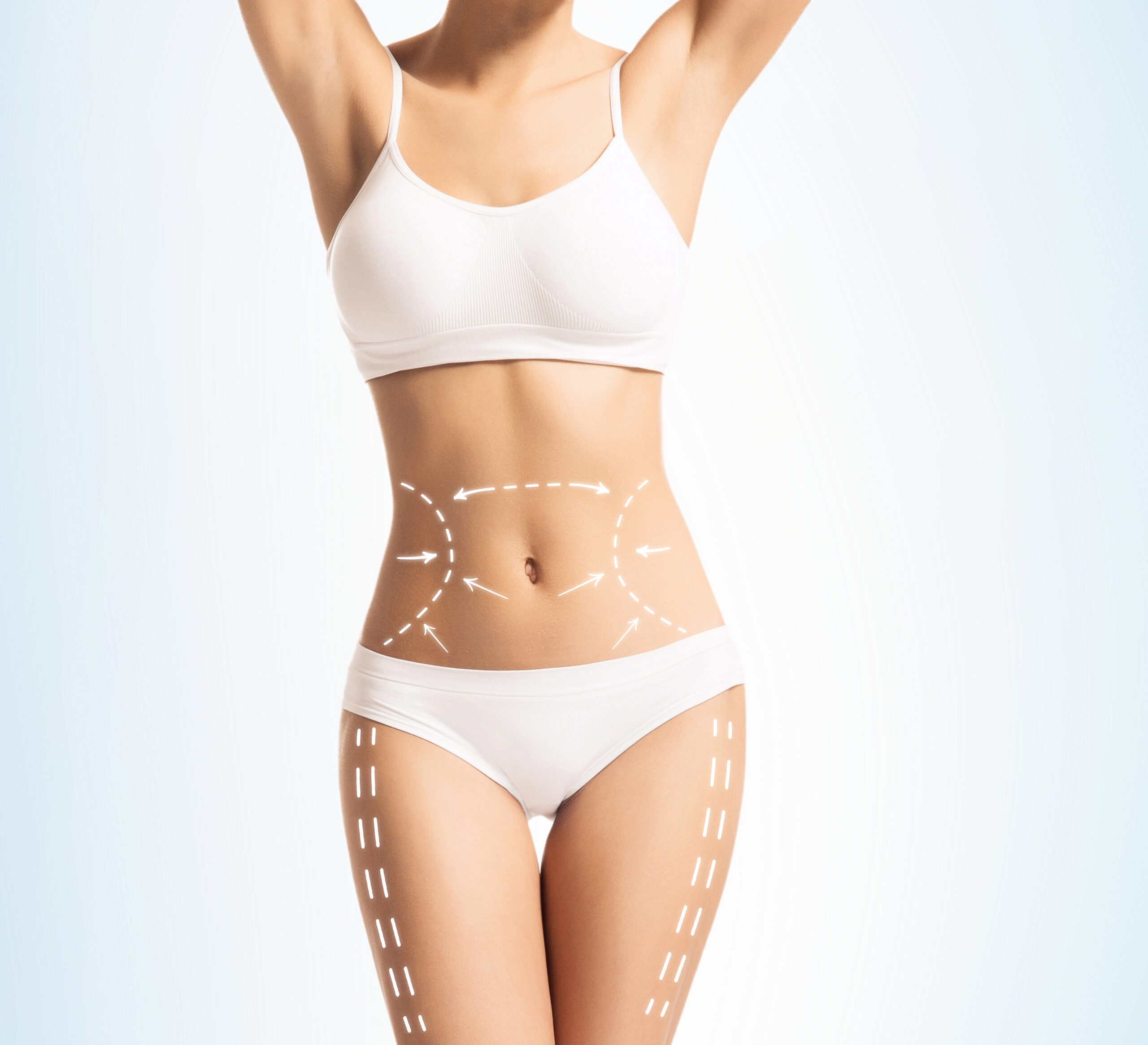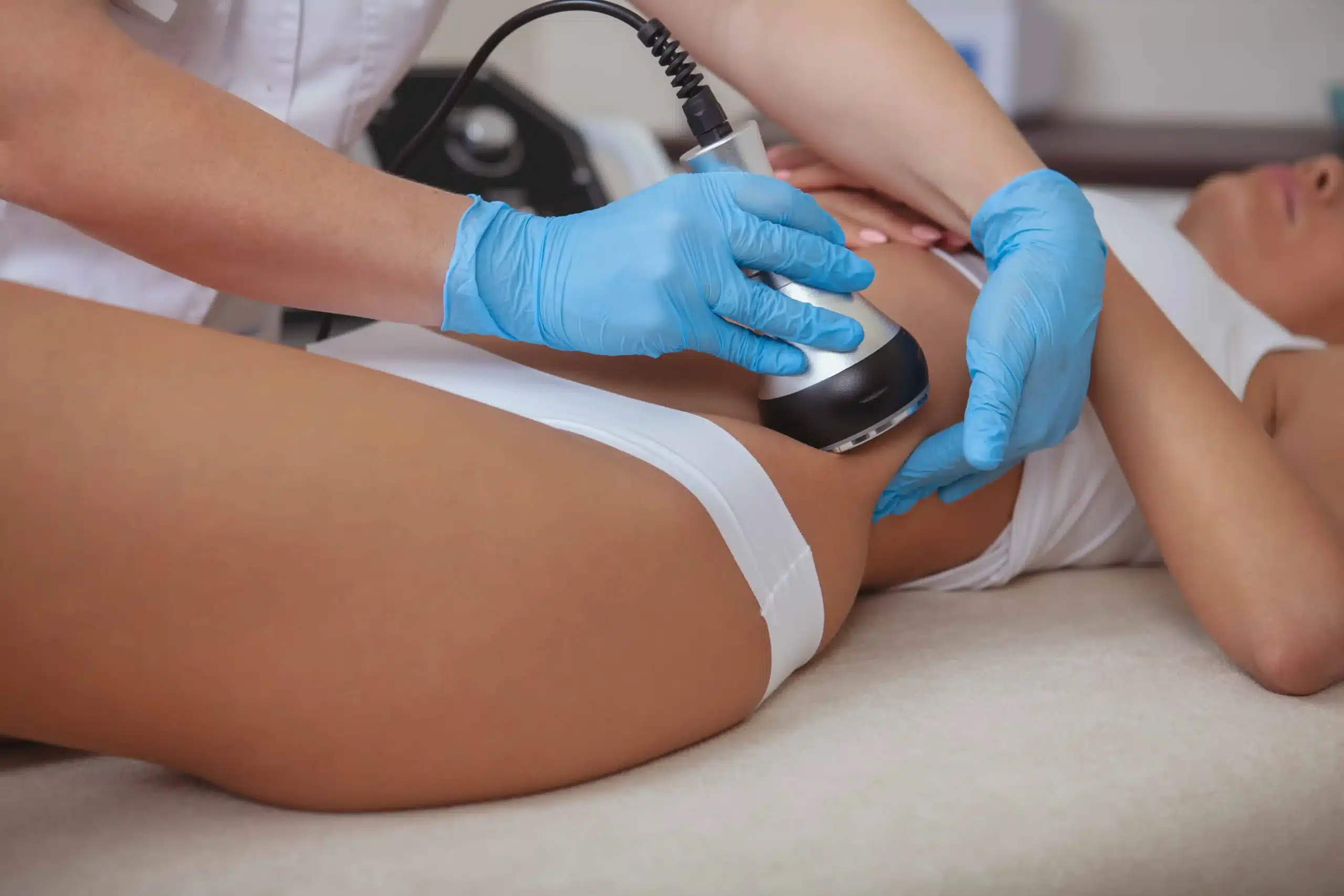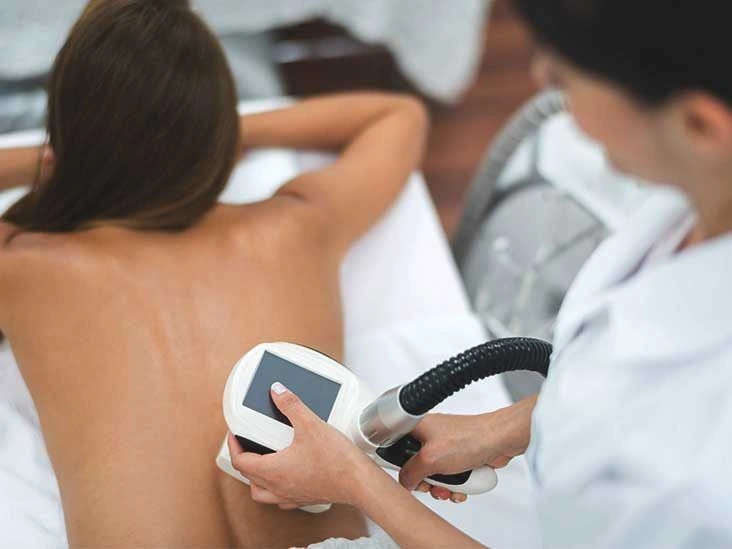Nonsurgical body contouring, often called nonsurgical fat reduction, encompasses several procedures designed to diminish or eliminate stubborn fat deposits to shape and refine various body areas. Most of these treatments are founded on one of four core mechanisms:
- Cryolipolysis (controlled cooling) uses cold temperatures to target and destroy fat cells.
- Laser lipolysis employs focused laser energy and heat to disrupt fat cells.
- Radiofrequency lipolysis applies controlled heating and ultrasound-based methods to affect fat cells.
- Injection lipolysis relies on injectable deoxycholic acid to break down fat cells.
These nonsurgical contouring methods are not intended as weight-loss solutions. The best candidates are those who are near their goal weight but want to remove persistent fat pockets that don’t respond to diet and exercise. For most procedures, a body mass index (BMI) over 30 is not recommended.
Fast facts
Convenience:
- Body contouring options are nonsurgical and range from minimally invasive to completely noninvasive.
- In most cases, patients can resume normal activities immediately after treatment.
Risks and side effects:
- Per the American Society for Aesthetic Plastic Surgery, 169,695 such procedures were performed in 2016. Reported side effects are generally mild and short-lived, including redness, swelling, and discomfort.
Cost:
- In 2016, the average price for nonsurgical fat reduction was $1,681, while injection lipolysis averaged $1,257.
Every individual differs, and the most reliable way to determine whether you’re a suitable candidate is to consult a qualified provider — such as a plastic surgeon, dermatologist, cosmetic surgeon, or another certified practitioner. Your provider will advise which approach best fits your goals and expectations. Below are some common examples.

Cryolipolysis
CoolSculpting is an FDA-cleared, noninvasive fat reduction technique based on cryolipolysis. It employs cold temperatures to selectively damage fat cells while sparing surrounding tissues. The frozen fat cells are gradually cleared by the lymphatic system, and once removed, they do not regenerate.
Target areas:
- abdomen
- thighs
- flanks
- arms
- bra and back fat
- under the buttocks (banana roll)
- double chin
Treatment length:
- Treating a single area typically takes 30–60 minutes, with little to no downtime for most patients.
- Several sessions are often necessary to achieve desired outcomes.
Laser lipolysis
SculpSure received FDA clearance in 2015 as a noninvasive lipolysis method that uses laser energy to heat and destroy fat cells. The elevated temperature causes fat cell death, and the body’s lymphatic system then eliminates the cellular debris within about 12 weeks following treatment.
Target areas:
- abdomen
- flanks
Treatment length:
- Each session lasts roughly 25 minutes, usually with minimal to no downtime.
- Multiple sessions are commonly needed to produce satisfactory results.
Radiofrequency lipolysis
Procedures such as UltraShape and BTL Vanquish ME are FDA-cleared, nonsurgical options that utilize ultrasound or radiofrequency technologies to reshape the body. These modalities tend to be gentle on the skin and generally cause little to no discomfort while addressing persistent fat pockets.

Target areas:
- abdomen
- flanks
Treatment length:
- An average session lasts about one hour, and most patients can return to normal activities immediately afterward.
- Multiple treatments are usually required for optimal effect.
Injection lipolysis
Kybella was FDA-approved in 2015 as a nonsurgical injectable for reducing fullness beneath the chin (submental fat), commonly called a double chin. Kybella contains a synthetic version of deoxycholic acid, a compound the body naturally produces to help absorb fat. This agent can destroy fat cells, which are then gradually metabolized over the following weeks.
Target areas:
- chin area (specifically under the chin)
Treatment length:
- Typical treatment sessions last around 30 minutes. Aside from temporary swelling and bruising, recovery is minimal, and patients can usually resume daily routines almost immediately.
- More than one session is often necessary to reach the intended result.
Nonsurgical body contouring compared to liposuction
The American Society of Plastic Surgeons notes that surgical liposuction carries risks such as complications from anesthesia, infection, seroma (fluid buildup), injury to deeper structures, deep vein thrombosis, and cardiopulmonary issues, among others. Nonsurgical body contouring typically presents fewer risks because it avoids surgery and general anesthesia. These nonsurgical options also tend to be less expensive than liposuction — in 2016 the average cost of liposuction was reported at $3,200.
Bottom line
In 2016, Americans spent more than $247 million on body contouring procedures. It’s important to remember that nonsurgical fat reduction is most effective when paired with a healthy lifestyle, including balanced nutrition and regular exercise, to optimize and maintain results.


















Leave a Reply
You must be logged in to post a comment.